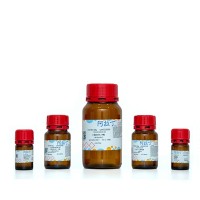Hormone-Sensitive Lipase and Neutral Cholesteryl Ester Lipase
互联网
604
Hormone-sensitive lipase (HSL) catalyzes the rate-limiting step in the hydrolysis of stored triacylglycerols in adipocytes, i.e., the hydrolysis of triacylglycerol to diacylglycerol (for a recent review on HSL, see ref. 1 ). It also catalyzes the hydrolysis of diacylglycerols and monoacylglycerols. However, a second enzyme, monoglyceride lipase, is required to obtain a complete degradation of monoacylglycerols (2 ). HSL is most abundantly expressed in adipose tissue, but is also expressed in steroidogenic and muscle tissues (3 ,4 ). It has been proposed that the function of HSL in steroidogenic tissues is to hydrolyze stored cholesteryl esters, in order to provide free cholesterol for the synthesis of steroid hormones (5 ). However, at least with regard to testis, this hypothesis has been questioned by the finding that HSL seems to be expressed in Sertoli cells and spermatids, rather than in the hormone-producing Leydig cells (6 ,7 ). In muscle tissues HSL is believed to function as a triglyceride lipase to release fatty acids for oxidation within the tissue. HSL also seems to be expressed in macrophages, at least in murine macrophages, in which several groups clearly have demonstrated the presence of HSL (8 –10 ). The presence of HSL in human macrophages is more questionable, since attempts to demonstrate HSL in these cells have so far been unsuccessful (9 ). It is speculated that HSL in macrophages functions as a cholesteryl ester lipase in hydrolyzing stored cholesteryl esters in the cytoplasm, i.e., it catalyzes the first step of reverse cholesterol transport.






